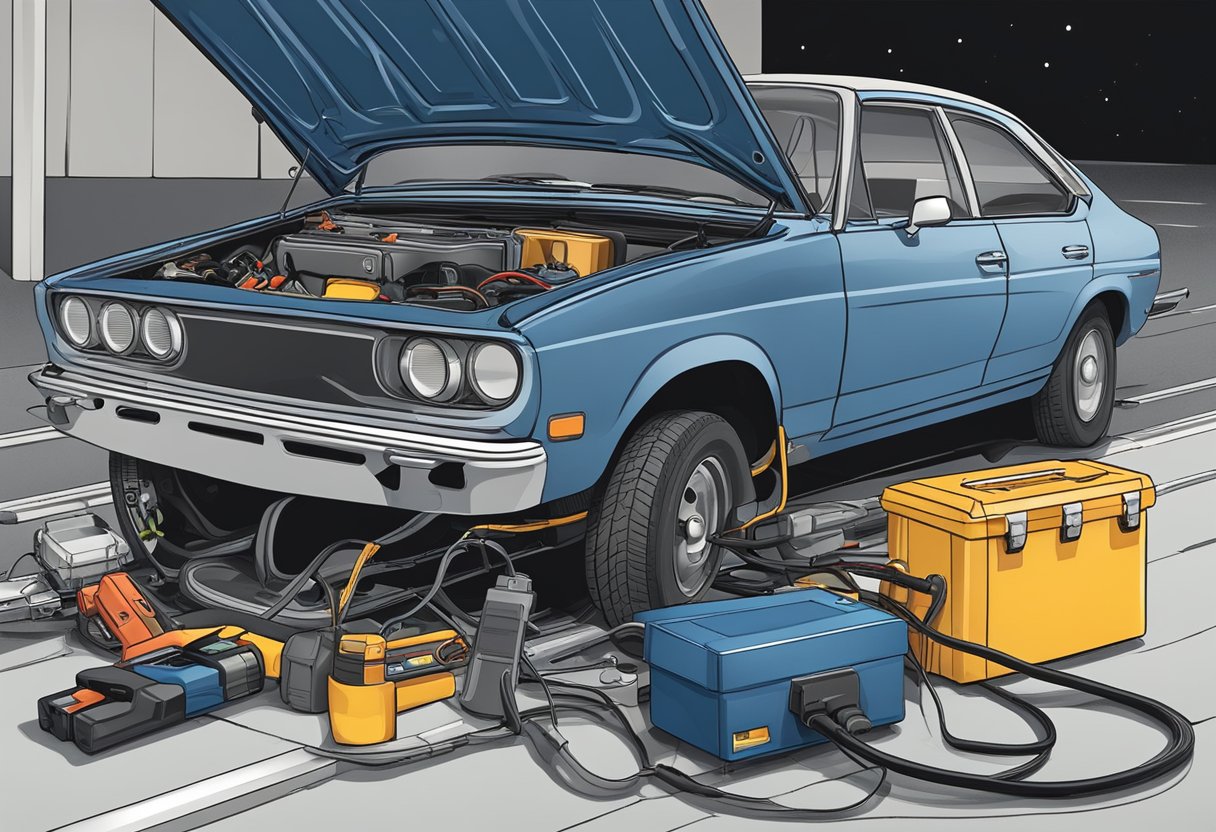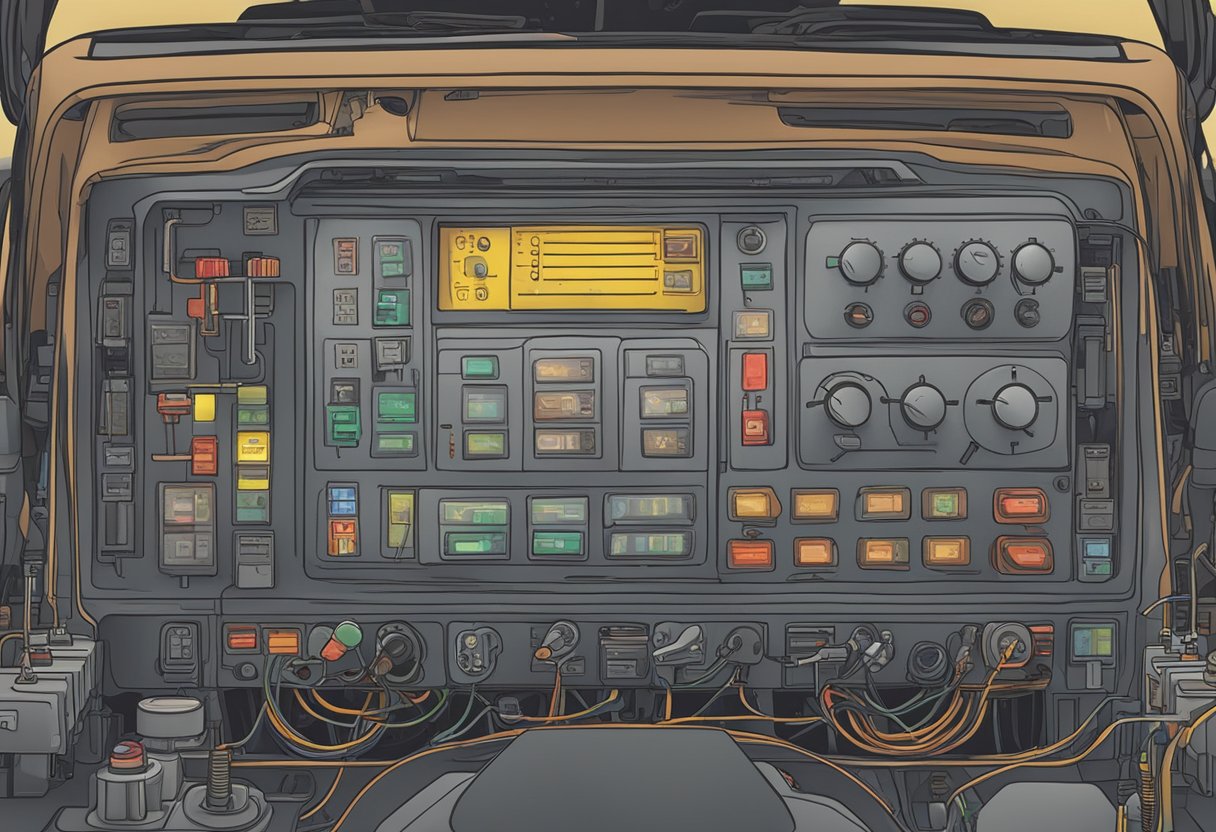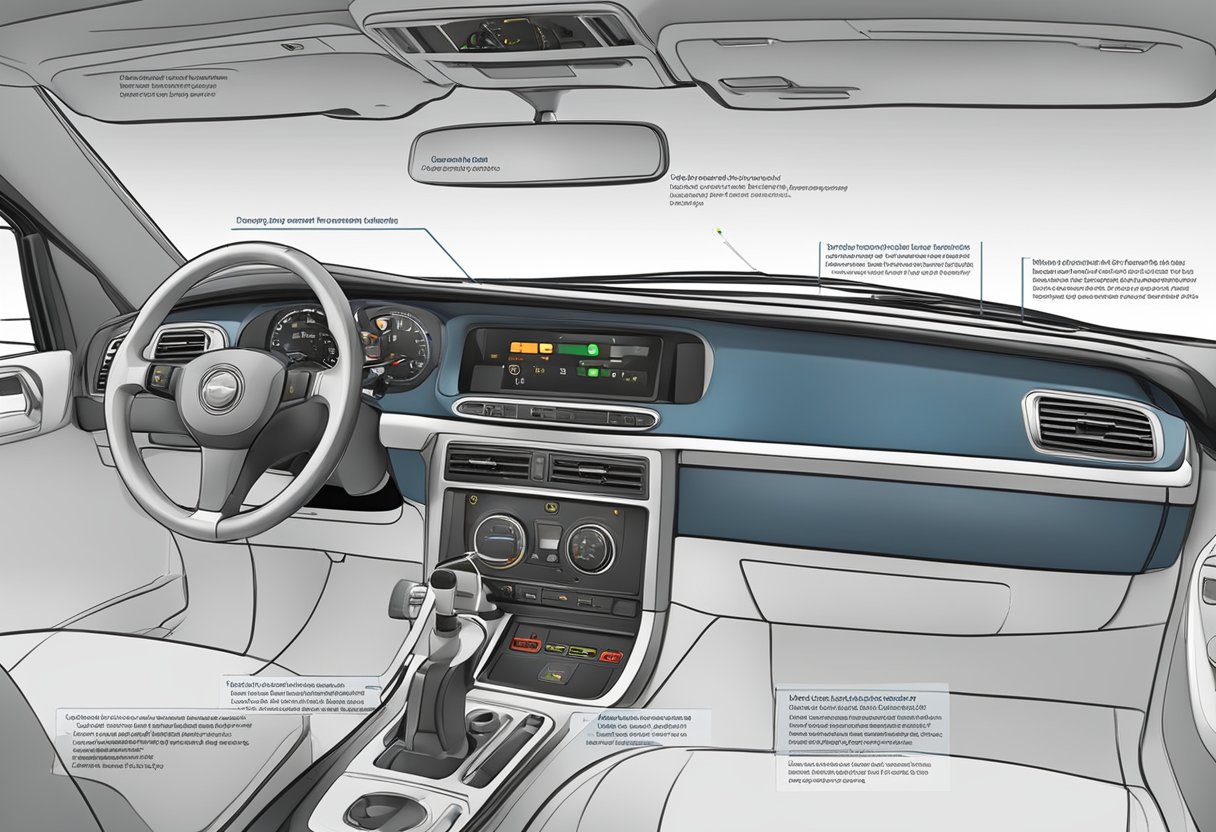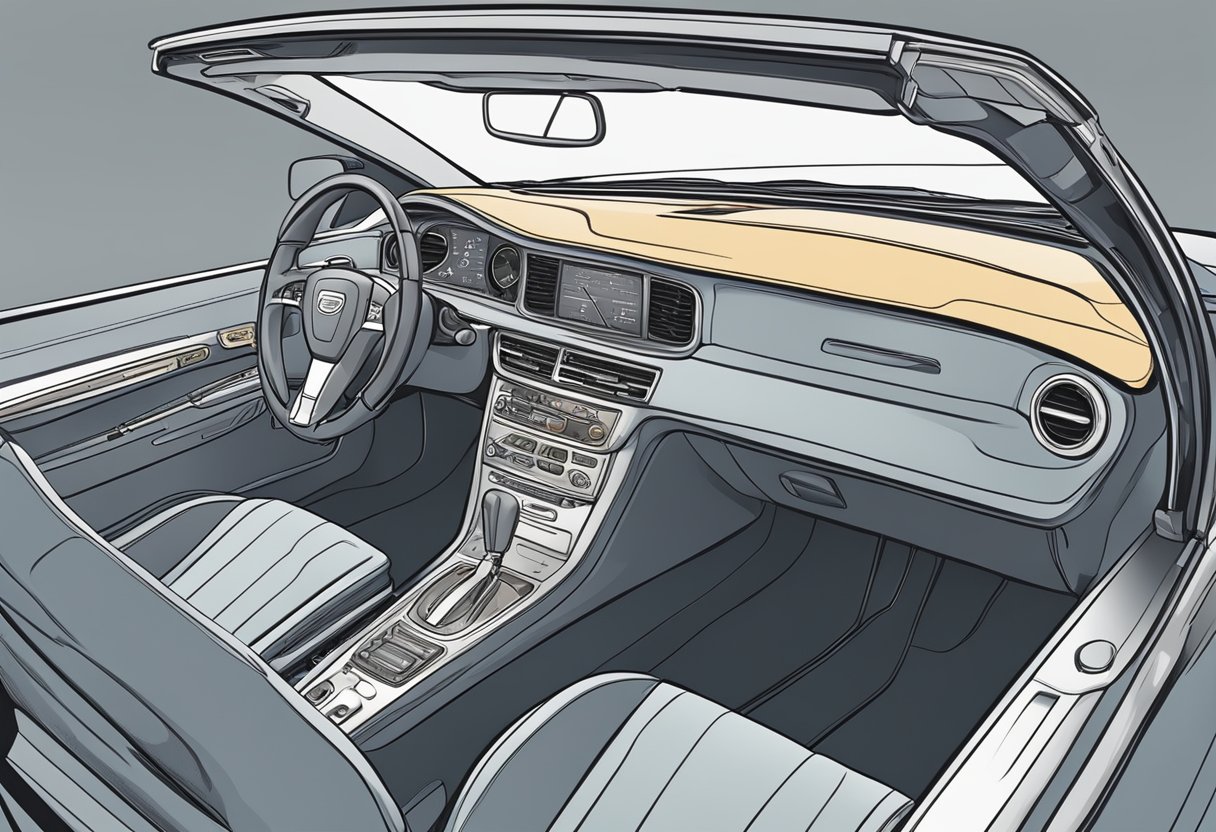If you’ve ever experienced the frustration of turning the key in your car’s ignition and finding that nothing happens, you know how important it is to have a reliable vehicle.
One of the most common issues that can leave you stranded is a lack of power to the dash or ignition.
There are several potential causes for this problem, and understanding them can help you diagnose the issue and find a solution quickly.
One possible cause of a no-power situation is a dead battery.
If your battery is old or hasn’t been properly maintained, it may not have enough power to start your car.
Another potential culprit is a faulty alternator, which is responsible for keeping your battery charged while you drive.
If your alternator is failing, your battery may not have enough power to start the car, even if it’s relatively new.
Other possible causes of a no-power situation include a faulty starter or ignition switch, a blown fuse, or a problem with the wiring or connections in your car’s electrical system.
Initial Diagnostic Approach
When you encounter a situation where your dash or ignition has no power, there are a few initial diagnostic steps you can take to identify the potential causes and solutions.
This section will cover the visual inspection, electrical system basics, and common symptoms that you should be aware of.
Visual Inspection
The first step in diagnosing any electrical issue is to perform a visual inspection of the affected area.
Check for any loose or disconnected wires, blown fuses, or damaged components.
Look for any signs of corrosion or wear and tear, and ensure that all connectors are properly seated.
Electrical System Basics
It’s important to have a basic understanding of your vehicle’s electrical system to diagnose any issues correctly.
The electrical system consists of a battery, starter, alternator, and various sensors and switches that work together to provide power to the engine and other components.
A problem with any of these components can cause your dash or ignition to lose power.
Common Symptoms
There are a few common symptoms you may experience when your dash or ignition has no power. These include:
- No response when you turn the key
- Dim or flickering dashboard lights
- Clicking or grinding noises when you turn the key
If you experience any of these symptoms, it’s essential to take the necessary steps to diagnose and fix the issue promptly.
In conclusion, performing a visual inspection, understanding the basics of your vehicle’s electrical system, and being aware of common symptoms are crucial steps in diagnosing why your dash or ignition has no power.
By following these initial diagnostic steps, you can identify the potential causes and solutions and get your vehicle back on the road in no time.
Battery and Connections
If your car suddenly loses power to the dash or ignition, one of the first things you should check is your battery and connections.
Here are two potential causes and solutions to consider:
Battery Health Check
A weak or dead battery can cause your car to lose power.
To check your battery’s health, you can use a voltmeter or take your car to a mechanic for a battery load test.
If your battery is weak or dead, you’ll need to replace it.
Terminal Connections
Your car’s battery terminals can become corroded or loose over time, leading to poor connections and a loss of power.
To check your terminal connections, first, turn off your car and disconnect the negative terminal.
Then, use a wire brush to clean the terminals and battery posts. Finally, reconnect the terminals and tighten them securely.
By checking your battery and connections, you may be able to solve the issue of your car losing power to the dash or ignition.
If these solutions don’t work, however, it may be time to take your car to a mechanic for further diagnosis.
Fuses and Relays
If your vehicle is experiencing a complete electrical failure, it is possible that a blown fuse or faulty relay is the culprit.
Fuses and relays are both important components of a vehicle’s electrical system that help regulate the flow of electricity to various components.
Fuse Inspection
Fuses are small, replaceable components that protect the electrical system from overloading and short circuits.
If a fuse blows, it will need to be replaced in order for the electrical system to function properly.
To inspect your vehicle’s fuses, follow these steps:
-
Locate the fuse box. This is typically located under the dashboard on the driver’s side or under the hood near the battery.
-
Open the fuse box cover and locate the fuse for the affected component.
The fuse box cover will typically have a diagram indicating which fuse corresponds to which component.
-
Inspect the fuse for any signs of damage, such as a broken filament or a blackened appearance.
If the fuse appears to be blown, it will need to be replaced.
-
Replace the fuse with one of the same amperage rating.
Do not use a fuse with a higher amperage rating, as this can cause damage to the electrical system.
Relay Testing
Relays are electrical switches that help control the flow of electricity to various components in the vehicle.
If a relay fails, the affected component may not receive power. To test a relay, follow these steps:
-
Locate the relay for the affected component. This is typically located in the fuse box under the hood.
-
Remove the relay from its socket.
-
Use a multimeter to test the relay for continuity. If the relay does not have continuity, it will need to be replaced.
-
Replace the relay with a new one of the same type and rating.
In conclusion, fuses and relays are important components of a vehicle’s electrical system that can cause a complete electrical failure if they are faulty.
By inspecting fuses and testing relays, you can identify and replace any components that are not functioning properly.
Could a Car Engine Knock on Startup Cause a Loss of Power to the Dash or Ignition?
Experiencing a car engine startup knock causes concern for many drivers. The potential loss of power to the dash or ignition can be a result of this issue. It’s important to address any unusual sounds or performance issues with your vehicle to prevent further damage.
Ignition Switch Issues
If your vehicle has no power to the dash or ignition, it could be due to a faulty ignition switch.
The ignition switch is responsible for sending power to the starter and other electrical components of the vehicle.
Here are some potential causes and solutions for ignition switch issues.
Switch Functionality Test
Before replacing the ignition switch, it’s important to test its functionality.
You can do this by turning the key to the “on” position and checking if the dash lights come on.
If they don’t, try wiggling the key to see if the lights flicker.
If they do, it’s likely that the ignition switch is faulty and needs to be replaced.
Replacement Procedures
If the ignition switch is faulty, it will need to be replaced.
This can be a complex process, so it’s recommended that you take your vehicle to a qualified mechanic.
Here are the general steps that will be taken:
- Disconnect the battery to prevent any electrical shock.
- Remove the steering column cover to access the ignition switch.
- Disconnect the electrical connectors from the ignition switch.
- Remove the bolts or screws that hold the ignition switch in place.
- Install the new ignition switch and reassemble the steering column cover.
- Reconnect the battery and test the new ignition switch.
It’s important to note that the exact replacement procedures may vary depending on the make and model of your vehicle.
Always consult the manufacturer’s instructions or a qualified mechanic for guidance.
In conclusion, if your vehicle has no power to the dash or ignition, a faulty ignition switch could be the culprit.
Test its functionality before replacing it and consider taking your vehicle to a qualified mechanic for replacement procedures.
Wiring and Grounds
If you are experiencing a situation where you have no power to your dash or ignition, it could be due to an issue with your wiring or grounds.
Here are a few things to check:
Wiring Inspection
The first step is to inspect all of your wiring and connections.
Look for any loose or damaged wires, corroded terminals, or frayed insulation. Make sure that all of your connections are tight and secure.
If you find any issues, repair or replace the affected components as necessary.
Ground Points Verification
Another potential cause of no power to your dash or ignition is a faulty ground.
Verify that all of your ground points are clean and tight. Look for any corrosion or damage to the ground wires or terminals.
If you find any issues, clean the affected area and tighten the connections.
In addition, you may want to consider adding additional ground points to your vehicle.
This can help to ensure that all of your electrical components are properly grounded.
By inspecting your wiring and verifying your ground points, you can help to identify and resolve any issues that may be causing a lack of power to your dash or ignition.
As an Amazon Associate we earn from qualifying purchases.
















My car’s dashboard lights flicker occasionally before stabilizing, especially when I start the engine. Could this be a sign of a problem related to the ignition switch, or should I look into other potential causes mentioned in the post?